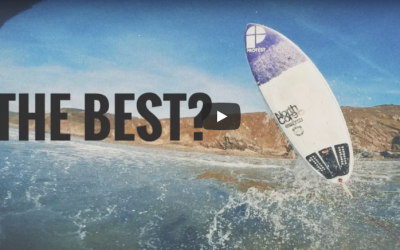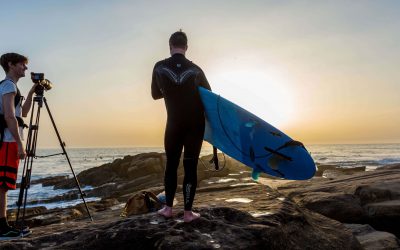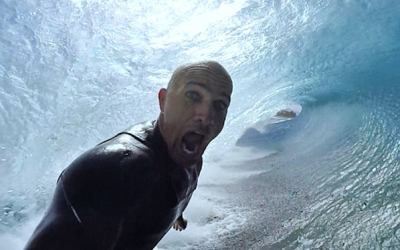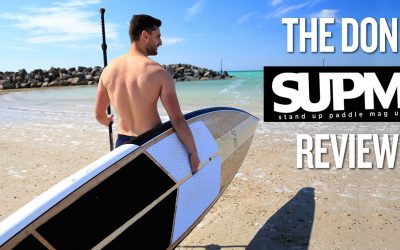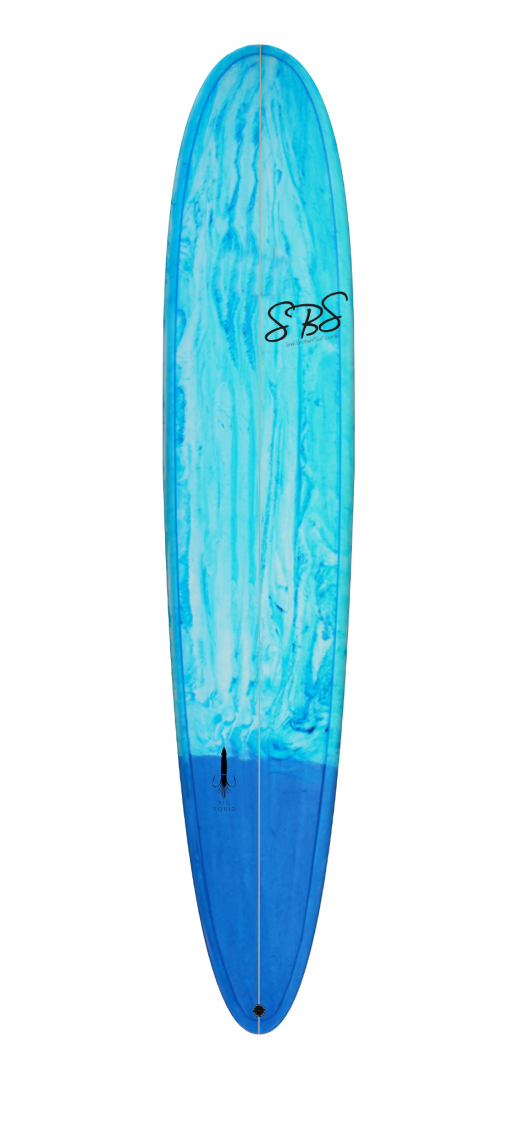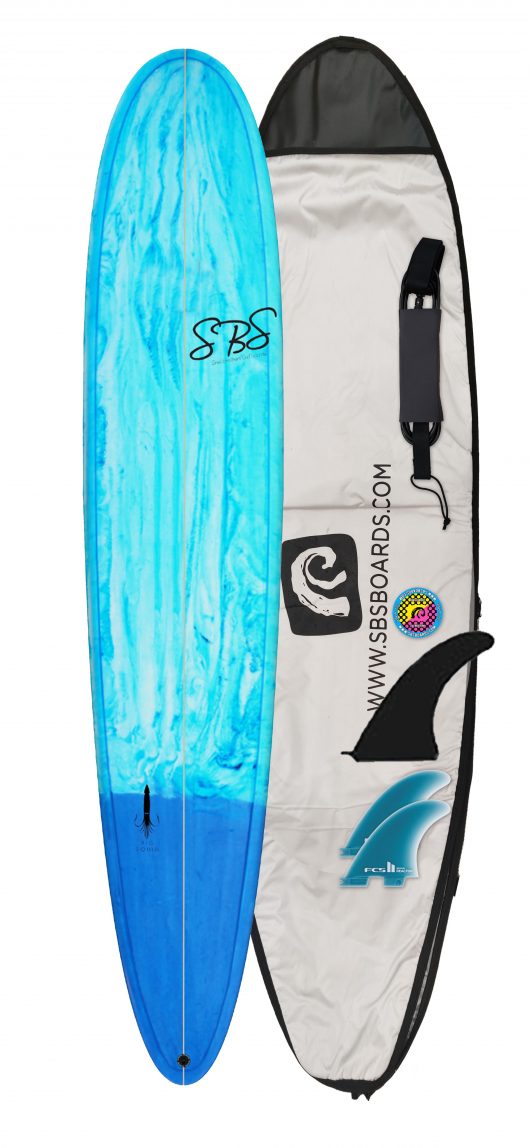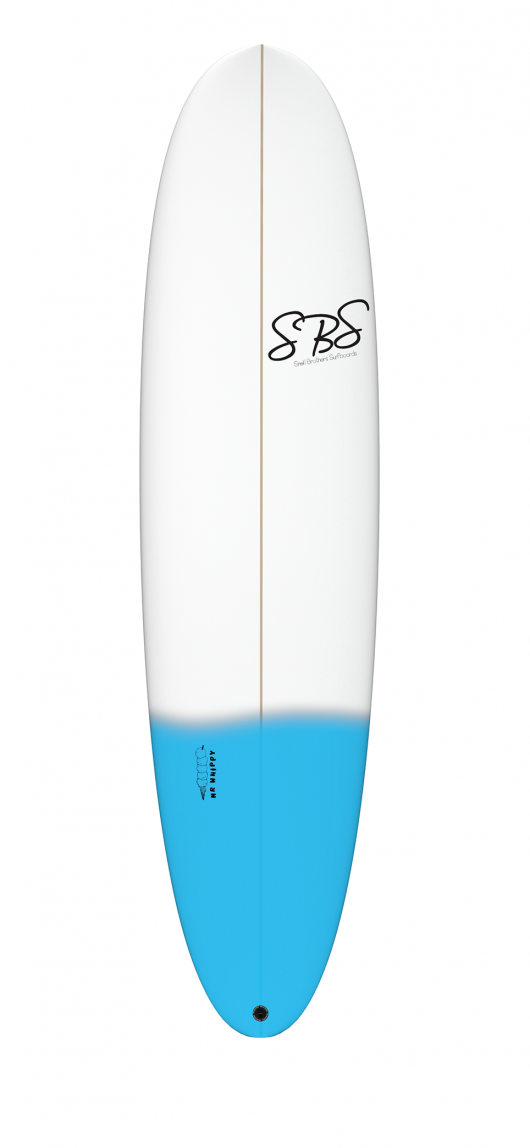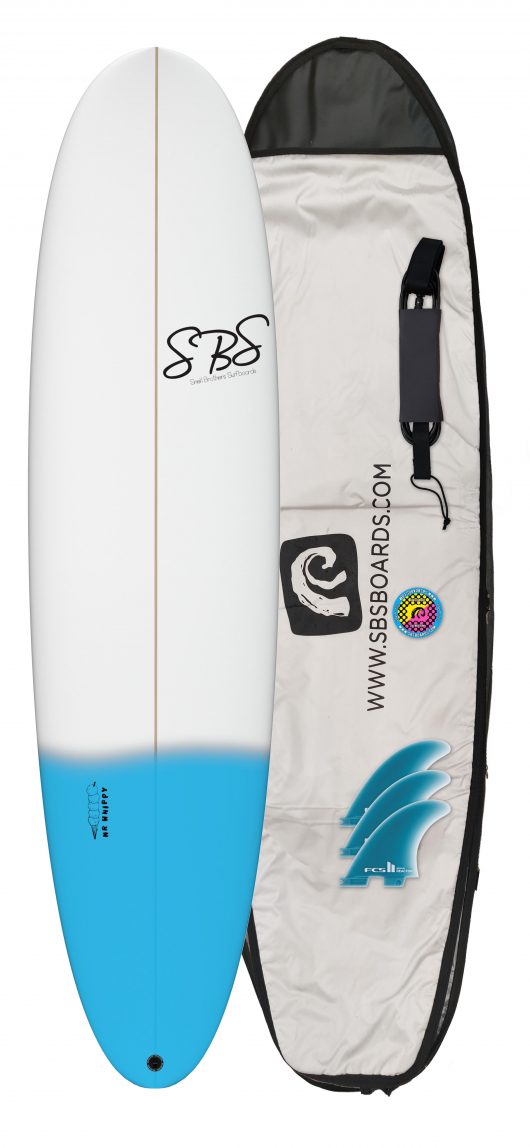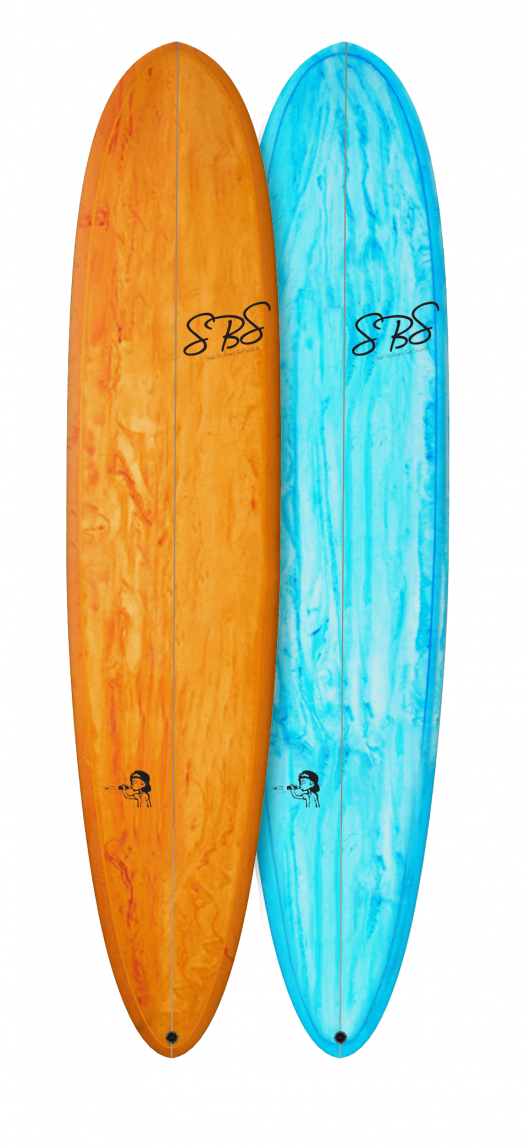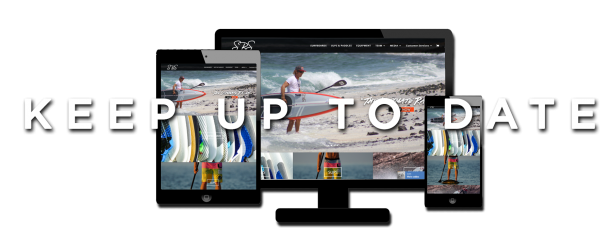Improve Your Roundhouse Cut back

The roundhouse cut back is one of the most stylish and functional manoeuvres in a surfers arsenal. The roundhouse cutback is a move that is used by surfers of all skill levels. It allows great rail control whilst being functional by bringing you back to the source of the power of the wave where you can generate more speed for your next manoeuvre. The idea of the move is that a surfer will turn their board in the opposite direction of the wave’s breaking motion. The cut back its self is completed on the wave’s open face by applying pressure on the inside rail and maintaining weight on the tail and fins to create a 180 degree direction change. After changing direction (or cutting back), the surfer will attempt to bounce off the whitewater or angle into the wave’s trough with the intent of returning to the original direction.
4 key principles to keep in mind when doing any turn in surfing
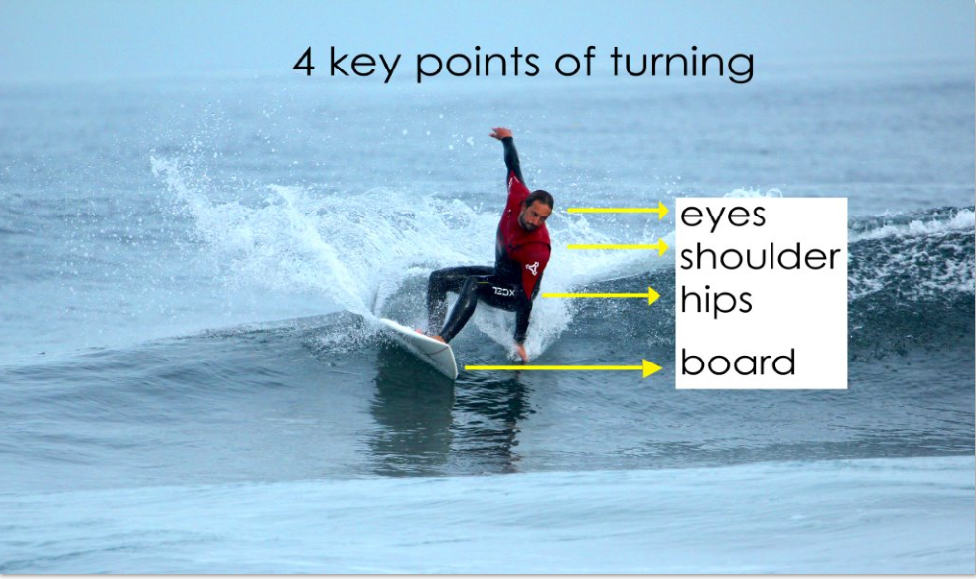
Eyes: Your eyes, and more specifically “sighting” to help project where you are headed on a wave. A great surfing technique to improve your surfing performance is using your eyes to help initiate, and make solid and stylish turns. All have to be able to visualize and see where they want to go using your eyes to lead the movement will be the initiation of any good turn. Look where you want to go, and your hips, then your board will follow.
Shoulders: Naturally wherever your head goes your shoulders will follow and with them your arms directing your movement. They are used to gain momentum in the turn as well as acting as a pivot point in which your body can move around.
Hips: Your upper body is starting to turn but now the momentum created
buy
your shoulders and arms need to be transferred to your hips to start making the turn. Your hips will start to indicate the pressure in your feet when to start to turn the board.
Board: The board is the last and final stage of the turning sequence your hips will transfer pressure to your feet which in turn will put pressure on the board and guide it the desired direction; if the 3 previous stages have been performed correctly your board should have an adequate drive and grip on the wave to make a smooth and balanced cutback.
#1
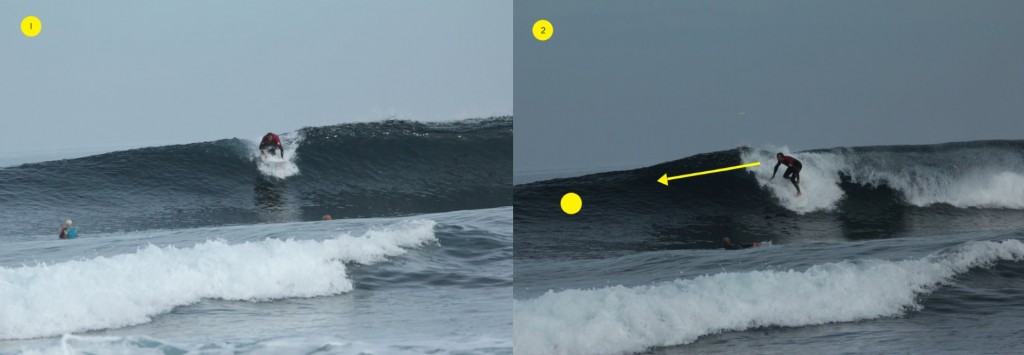
Visual Cue: The wave in front is not walling up but instead has a flatter section
Tips: As you paddle for the wave and make the drop, immediately look down the line to see how the wave is breaking. Once this quick assessment is made, look five to six feet ahead and look for a good section for a bottom turn. Speed is the key in the beginning part of this move; generate as much speed possible, using a high angle on the wave close to the lip/crest whilst pumping will create lots of power and speed for your next move.
#2
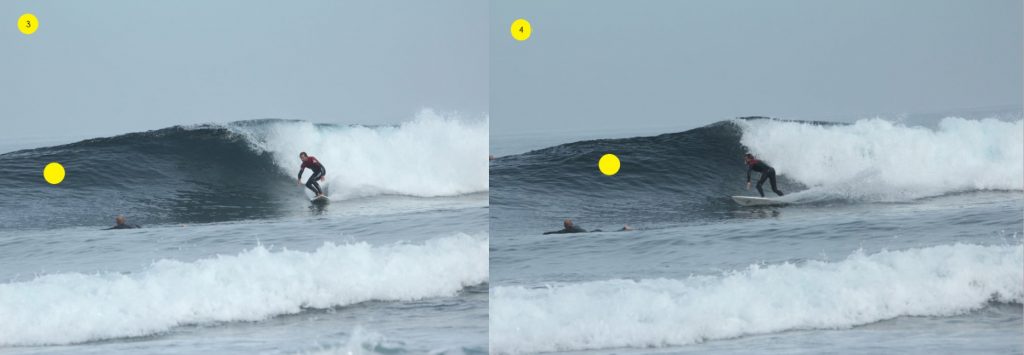
Visual Cue: As you go into your bottom turn you are already looking to the next section the mid-face or even top of the wave. This is the critical part of the turn and looking where you want your body and board to go, will help you get there. Pick your point on the wave
were
you will initiate the turn.
Tips: Always keep your eyes on where you want to execute the change of direction. You don’t want to make your turn too early when the wave is too vertical, but you also don’t want to
glide
too far out beyond the shoulder where the wave is too flat as you won’t retain enough speed to get back into the
whitewater
#3
Visual Cue: keep your eyes fixed on the turning point until you want to indicate the turn
Tips: coming from your bottom turn, keep your board flat on the wave and maintain weight slightly forward to retain full speed, when reaching your turning point unweight your foot and lean slightly back. Whilst still maintaining most of your weight and body over the midpoint of the surfboard.
#4
Visual Cue: You will start to lose speed your eyes should be focused on the bottom of the wave progressing back to the whitewater
Tips: As you approach the top of your turn start to think and look towards the bottom of the wave, the next place you want to go You will feel the friction of the water grabbing the board and speed will be decreased depending on how aggressive you want your turn will
depend
how hard you push down on your heels and let the balls of your feet lift up, your inside rail will now be submerging hold this position until you have performed a full 180 direction change. Through this movement try to keep most of your weight and body over the midpoint of your surfboard to maintain your speed.
#5
Visual Cue: Halfway through the
turn
your leading arm should be touching the wave face. This keeps you low to your board as well as providing a point for you to pivot around
Tips: As your board changes direction, so must your body and mind. Another golden rule of wave riding: Where your eyes look, your board will follow. This means that you must turn your head and upper body back toward the whitewater as your board turns. Halfway through the
turn
your leading arm should be touching the wave face. This keeps you low to your board as well as providing a point for you to pivot around. Lean on your rail as hard as you can during this part of the turn to create a tight powerful arc. Be sure to watch the tip of your board as you turn because you want it to fit into the transition of the wave perfectly in order to maximize speed. As your board turns back towards the
whitewash
you want to finish the turn. Stay low and focused on the front rail of your board, and how it fits into the transition of the wave.
#6
Visual Cue: The nose of your board will be pointed toward the oncoming whitewater Finish the turn with your back leg straight and your weight over a bent front leg.
Tips: Once you have completed your turn the nose of your board will be pointed toward the oncoming whitewater, here you can be creative in your choice depending on the size and power of the wave, you can either aim high for the crest of the white water and essentially end your cutback with a lip re-entry or aim for the mid-section. Doing this will result in a very quick burst of speed from the waves power. (This does require great body & board stabilization). Or you can aim low and attempt to avoid the wave’s power and avoid being knocked down by the swirling foam. This may the safest route in bigger surf, but it does offer the best chance of losing the face of the wave and being left in the whitewater. Now that the turn is finished turn your board back towards the open face of the wave by pressing on your back foot. Watch the transition of the wave as you pivot so you don’t nosedive, and go straight into your next bottom turn.
Related Posts
!!! BEST Small Wave Surfboard !!!
!!!The BEST Small Wave Surfboard !!! Team rider Jack has been putting the predator surfboard through its paces last few months and this is his verdict. Our Team Rider Jack Atlantic is back at it again with another Vlog about what he's been up to surfing in the...
The Best Camera For Surf Photography and Video
The Best Camera For Surf Photography and Video Sam from SBS boards What I use and the team around me uses to get our shots. what lenses we use settings and all the rest that goes with taking photos and video for surfing. I will start by saying im no camera guru. I...
What It Feels Like To Surf Kelly’s Wave
Living the dream Surfing Kellys waves pool..... From its first videos in 2016 kelly has played willy wonker and his wave pool factory almost showing people the incredible wonderland know as the ranch. Its pretty much the dream of every surfer on the planet to push a...
Are Epoxy Surfboards Better For The Environment?
Why are Epoxy Surfboards Better For The Environment? Surfing is getting More Environmentally friendly than ever before we as a tribe are more conscious and environmentally aware of our actions as a surfer. In the creation of our beloved surf creations we use...
Top 10 Unwritten Rules of Surfing Every Surfer Should Know
Top 10 unwritten rules of surfing every surfer should know Surfing is without a doubt one of, if not the coolest sport on the planet, so it comes as no surprise to know that the worldwide surfing population is increasing more than ever. This inevitably means more...
SUP MAG UK (SBS Don Review)
The Don Touring Stand Up Paddleboard has been in our sup quiver since 2014 its be reshaped and improved with little tweaks into our ultimate touring board that you see before you. The Don is a great entry level board for the most paddler looking to get some distance...






